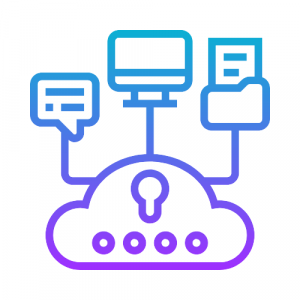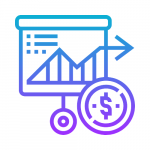With the digital revolution over the last decade or so, more and more companies have found that traditional infrastructure simply can’t sustainably evolve to meet their digital needs. Its many restrictions and increasing business pressures such as the need for lower costs, flexibility, speed to market, and scalability — have led to a massive shift to the cloud. In fact, IDC forecasts that worldwide spending on cloud would be $277 billion in 2021.
Cloud services have really levelled the playing field between small and large companies, as anyone can now create a strong backbone for their business without having the billions to sink into on-premise IT infrastructure. This is why internet companies like Uber and Airbnb have been able to compete on the same level as large enterprises, investing more of their available funds into product development and marketing instead of expensive hardware.
But!
Not all enterprises are born in the digital age. Enterprises with decades of grand legacy and global footprint didn’t start on the cloud. This typically is the first stage for most enterprises of the pre-digital era. In this blog post, we discuss the journey of businesses who are not ‘cloud-first’ to reach true business transformation on the cloud.
Stage 1: On-premise
This is where it all starts. Companies decide that they want more than what their on-premise infrastructure can offer them, and start looking towards the cloud. These companies are in research mode, finding out as much as they can before making the move, figuring out the best cloud strategy for them. Many clients who come to us in their quest for cloud advisory services are in this stage.
Stage 2: Hybrid cloud
This is the stage in which we first meet the vast majority (in fact, around 80%) of our clients. Moving infrastructure entirely from on-premise to cloud can be a massive undertaking, especially for larger companies who have already invested a lot into their on-premise infrastructure. So, the shift occurs in stages, usually with some applications and workloads — say email or file-sharing ‚ moving to the cloud first. This lets companies figure out what’s working and what isn’t before they shift more of their workload. We wrote a bit about this in an earlier blog post here.
The hybrid stage typically lasts for 3 to 8 years, in our experience, depending on clients’ on-premise hardware refresh cycles and growing needs. Companies are most amenable towards a complete shift to the cloud once it’s time to upgrade local systems, rather than abandoning brand-new hardware that has recently been installed. Privileged and sensitive data are often the last things committed to the cloud. However, cloud security can be more robust than on-premise these days, as overall security and reliability are key to vendors and they invest more heavily in cutting edge security and data integrity systems, as well as trained staff, in a way that most individual organisations cannot.
For many decision-makers, hybrid cloud is their endpoint, the furthest they can imagine going in the foreseeable future. Even enterprise software vendors who were providing only on-premise services have now moved to the cloud and are slowly evangelising their customers to move to the cloud as well.
Case Study: DR for geographically diverse SAP
We helped one of the world’s largest paper, pulp, and packaging companies, a first-time cloud adaptor, to establish a unified DR site.
Stage 3: All-in-cloud users
All-in-cloud users are those few pioneering enterprises who adopted the cloud early and are already leveraging the cloud for their workloads. They have ‘gone cloud’, completely moving on from on-premise infrastructure.
However, when discarding the last vestiges of their on-premise systems for the cloud, most companies tend to go with their existing cloud service provider. As cloud adoption usually happens in stages, they approach the vendor they already have a relationship with for each stage, assuming that it will be easiest and most convenient as many of their existing systems already reside with that vendor.
This approach can work well for some users…until it doesn’t. And once it doesn’t, they can run into several highly avoidable difficulties. It is at this stage that they move to the ideal solution which combines the best of cloud world — the multi-cloud solution.
Stage 4: Multi-cloud adopters
Multi-cloud adopters are those who choose the right cloud for the right application and make them work impeccably well together. So few are these multi-cloud adopters that we think of them as unicorns, although their numbers are now growing. As masters of the cloud, they now have the expertise to leverage the capabilities of AWS, GCP, Azure, Alibaba and their own private cloud to suit their needs, in specific areas each provider shines. They also maintain autonomy and flexibility by not tying themselves with one specific cloud provider.
Our ultimate aim is to help each of our clients develop a strong multi-cloud strategy which enables a stable and secure infrastructure on which to run their business.
As the benefits of going multi-cloud become more evident, many companies are migrating to stage 4. A report by Gartner showed that enquiries about cloud management have grown by 30-40% between 2015-2017, with the adoption of a multi-cloud strategy being the key driver of interest. Major global companies are changing lanes, such as Netflix, previously a well-known AWS loyalist, branching out to work with GCP in many areas. Others are following suit, whether it’s for regional convenience, disaster recovery, avoiding lock-in, or a host of other possible reasons.
At 1CloudHub, we don’t discriminate. Get in touch with our consultants today, and we’ll help craft the right approach for you.
This is the first of our three part series on multi-cloud strategy. In the next edition, we will talk about ‘Multi-cloud strategy: Adopting the best on offer to perfectly match your needs’. Look forward to seeing you again!



